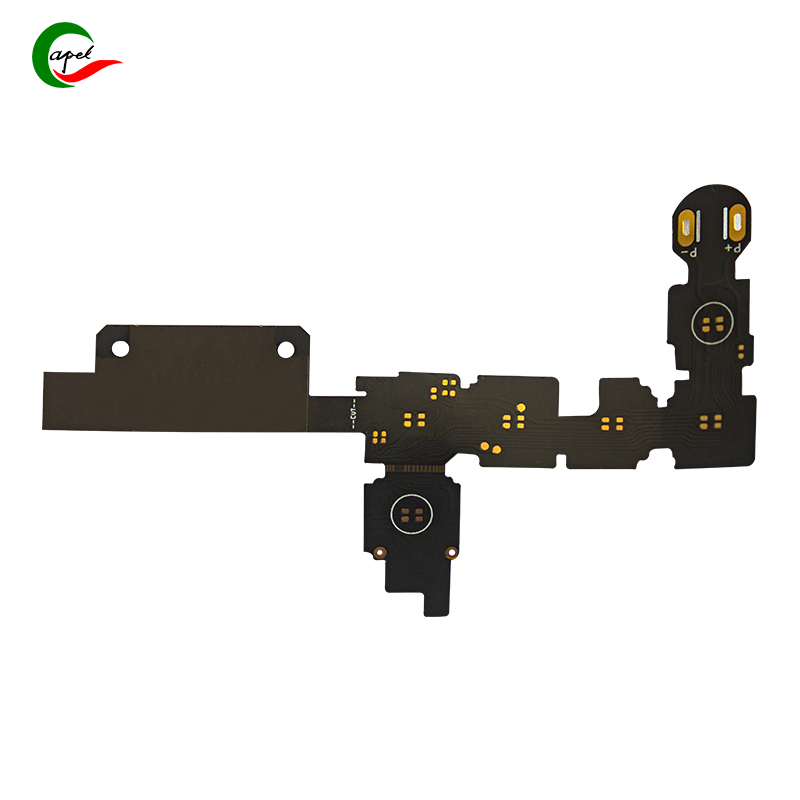When it comes to modern cars—whether electric, autonomous, or packed with smart features—one component quietly makes or breaks reliability: the automotive flexible printed circuit (FPC). These thin, bendable circuits connect sensors, batteries, and control systems, enduring extreme temperatures, vibrations, and chemicals. But with dozens of options on the market, how do you pick the right one for your vehicle or project? This guide cuts through the jargon to focus on what truly matters.
Start with the Basics: What Makes an FPC "Automotive-Grade"?
Not all flex PCBs are built for the harsh realities of a car’s environment. Automotive-grade FPCs must survive conditions that would destroy consumer electronics:
- Temperature extremes: From -40°F (-40°C) in winter to 257°F (125°C) under the hood.
- Vibration torture: 30+ Gs of shaking—equivalent to driving over potholes for a decade.
- Chemical exposure: Oil, coolant, road salt, and humidity that corrode lesser materials.
If an FPC isn’t rated to handle these, it’s a ticking time bomb. Look for certifications like IATF 16949 (the automotive quality standard) and UL94 V-0 (flame resistance) to weed out inferior products.
Match the FPC to Its Job: Application Is Everything
Automotive FPCs aren’t one-size-fits-all. A circuit for a battery pack needs different specs than one for a touchscreen. Here’s how to choose based on use case:
1. Battery Management Systems (BMS)
EV batteries rely on FPCs to monitor cell voltage, temperature, and charge. For this critical role:
- Prioritize heat resistance: Use FPCs with polyimide (PI) substrates rated to 284°F (140°C) to withstand battery heat.
- Thin but tough: Opt for 0.004–0.008 inch (0.1–0.2mm) thickness to fit between cells, with rolled copper (not electrolytic) for better flexibility during battery expansion/contraction.
- Shielding matters: Look for FPCs with copper foil shielding to block electromagnetic interference (EMI) from nearby motors—critical for accurate battery data.
2. Advanced Driver-Assistance Systems (ADAS)
ADAS sensors (LiDAR, radar, cameras) demand FPCs that transmit high-speed data without lag. Key features:
- High-frequency performance: Choose low-loss materials like liquid crystal polymer (LCP) or modified PI to minimize signal loss at 77GHz (radar) or 10Gbps (LiDAR).
- Tight impedance control: 50Ω ±10% is non-negotiable for radar and camera links—impedance mismatches cause signal reflections that corrupt data.
- Sealed construction: IP6K9K-rated FPCs (water/dust proof) are a must for sensors mounted behind bumpers or under the car.
3. Infotainment and Smart Cabin
Screens, touch controls, and steering wheel buttons need FPCs that balance flexibility and durability:
- Ultra-thin design: 0.003–0.005 inch (0.08–0.13mm) thickness for curved displays and tight spaces behind dashboards.
- High flex life: Look for FPCs tested to 1 million+ bends (180° at 0.1 inch radius) to survive repeated button presses or screen adjustments.
- Low outgassing: Avoid FPCs with adhesives that release fumes—these fog up screens or damage sensitive electronics in closed cabins.
4. Motor and Powertrain Controls
FPCs in electric motors or inverters handle high currents and extreme heat:
- Thick copper traces: 35μm+ copper (vs. 12μm in consumer FPCs) to carry 100A+ currents without overheating.
Materials Matter: The Building Blocks of Reliability
Even the best design fails with cheap materials. Focus on these components:
- Substrate: PI is non-negotiable for most automotive uses. Avoid PET (polyester)—it melts above 248°F (120°C).
- Copper type: Rolled copper (RA) for high-flex areas (battery packs, hinges); electrolytic copper (ED) is acceptable for static, low-vibration parts (infotainment).
- Coverlay: Use PI coverlays (not epoxy) for chemical resistance—they stand up to oil, coolant, and road salt better than alternatives.
- Adhesives: For bonded FPCs, choose epoxy adhesives with Tg (glass transition temperature) ≥ 302°F (150°C) to resist heat-induced softening.
Test Like It’s Life-or-Death (Because It Might Be)
Ask suppliers for test data on these critical metrics:
Test | Minimum Requirement | Why It Matters |
Temperature cycling | -40°C to 125°C, 1000 cycles, no delamination | Prevents failure in hot summers/cold winters |
Vibration testing | 10–2000Hz, 30G acceleration, 1000 hours | Ensures survival on rough roads |
Chemical immersion | 500 hours in oil/coolant, no corrosion | Stops degradation from underhood fluids |
Flex endurance | 100,000+ bends, <5% resistance change | Critical for moving parts (steering wheels) |
Don’t Skimp on the Supplier: Red Flags to Watch For
A reliable supplier is as important as the FPC itself. Avoid companies that:
- Can’t provide IATF 16949 certification.
- Refuse to share test data or cross-sections of their FPCs.
- Offer "one-size-fits-all" solutions—automotive FPCs need customization.
- Use generic materials (e.g., "polyester substrate" instead of specifying PI grade).
Final Tip: Overengineer (A Little)
Automotive environments are unpredictable. If you’re unsure between two specs, choose the tougher option. A battery FPC rated to 140°C instead of 125°C might cost 10% more, but it could prevent a recall when a car sits in a 100°F parking lot.
Choosing the right automotive FPC boils down to one question: Will it survive the car’s lifetime? By focusing on application-specific needs, proven materials, and rigorous testing, you’ll avoid costly failures. After all, in a vehicle, reliability isn’t just a feature—it’s a safety requirement.
Your car’s next breakthrough starts with the right flex PCB. Choose wisely.
Founded in 2009, our company has deep roots in the production of various circuit boards. We are dedicated to laying a solid electronic foundation and providing key support for the development of diverse industries.
Whether you are engaged in electronic manufacturing, smart device R&D, or any other field with circuit board needs, feel free to reach out to us via email at sales06@kbefpc.com. We look forward to addressing your inquiries, customizing solutions, and sincerely invite partners from all sectors to consult and collaborate, exploring new possibilities in the industry together.
